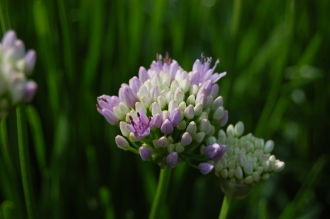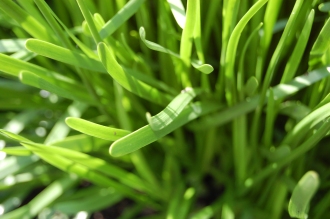Position: Full sun to light shade
Soil: Moist, well drained
Flowering period: Summer
Eventual Height: 50cm
Eventual Spread: 20cm
Hardiness: 4b, 5a, 5b, 6a, 6b, 7a, 7b, 8a, 8b, 9a
Family: Amaryllidaceae
Sub Family: Alliaceae
Allium senescens is a deciduous/ semi evergreen bulbous perennial with a clump forming habit. Its dark green are linear, hollow, up to 30cm long and 12mm broad. Its pink/ purple hermaphrodite flowers are terminal umbels of bell-shaped flowers, these emerge from a papery bract in summer.
Allium senescens, commonly known as German Garlic, Mountain Garlic or Broadleaf Chives, is native to central Europe to Siberia, China and Korea. In its native habitat it grows in dry rocky places.
The etymological root of the binomial name Allium was the ancient Latin term for garlic. Senescens is derived from the Latin senesco meaning ‘grow old’.
The landscape architect may find Allium senescens useful as part of mixed perennial planting scheme. Once established this perennial is drought tolerant.
Ecologically, Allium senescens flowers are attractive to pollinating insects, including bees and butterflies.
Allium senescens prefers moist, rich, fertile, well-drained soils. It tolerates most pH of soil.
Allium senescens requires little maintenance. Clumps of this plant may be divided in spring or autumn.
![]()
Landscape Architecture












